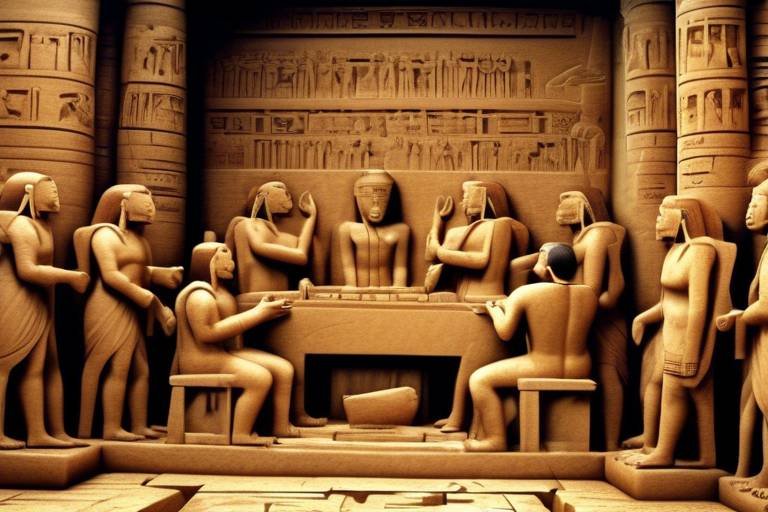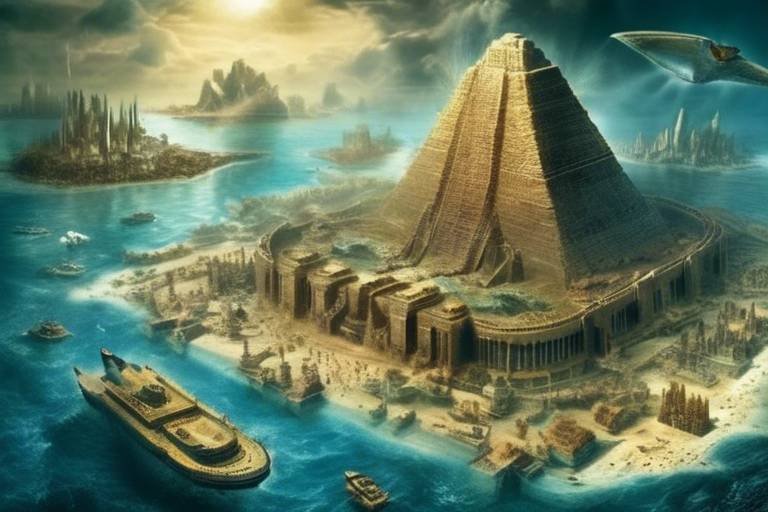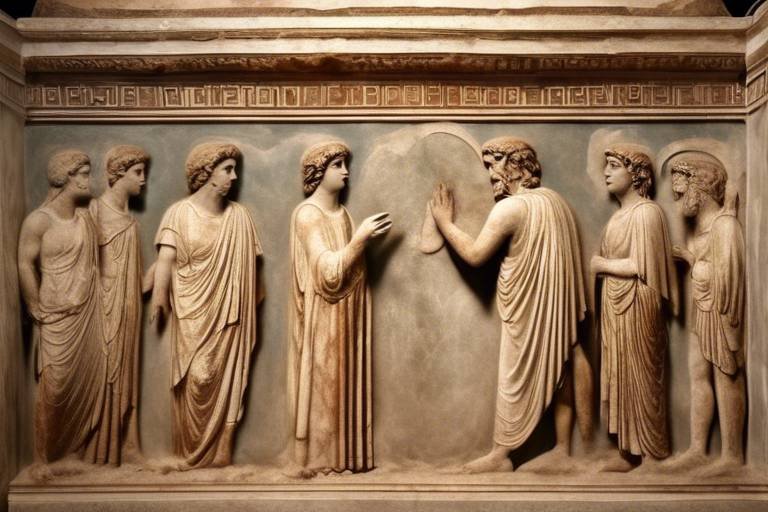The Secrets of Ancient Civilizations' Economy
Exploring the economic systems and practices of ancient civilizations provides fascinating insights into their trade, agriculture, currency, and societal structures. These ancient societies, shrouded in mystery and wonder, laid the groundwork for the economic principles that shape our modern world today. By delving into the secrets of their economies, we can uncover a treasure trove of knowledge that enriches our understanding of history.
Ancient Egypt, with its awe-inspiring pyramids and majestic pharaohs, had an economy deeply rooted in agriculture and trade along the life-giving Nile River. The Egyptians utilized a barter system for exchange, trading goods like grain, papyrus, and precious metals. Their economic prowess was a cornerstone of their advanced civilization, enabling them to thrive and build monumental structures that still awe us today.
The Greek city-states, scattered across the Mediterranean landscape, formed intricate trade networks that spanned vast distances. Olive oil, pottery, wine, and other goods flowed through these bustling trade routes, connecting distant lands and fostering cultural exchange. The economic vibrancy of the Greek city-states reveals a complex web of commerce that underpinned their flourishing societies.
In the heart of the mighty Roman Empire, currency reigned supreme, facilitating trade across vast territories. The Romans developed sophisticated trade routes, levied taxes efficiently, and built a thriving economy that powered their expansive empire. Their economic ingenuity and commercial acumen laid the foundation for the economic systems of the future.
The ancient Maya civilization, nestled in the lush jungles of Mesoamerica, constructed elaborate trade routes that linked diverse regions. Jade, obsidian, cacao, and other precious commodities traversed these intricate networks, fueling the economic prosperity of the Maya. Their trade routes were a testament to their economic sophistication and cultural richness.
China's Silk Road, a legendary trade route stretching from East to West, facilitated the exchange of silk, spices, and other coveted goods. This ancient thoroughfare connected distant civilizations, fostering a vibrant economic exchange that transcended borders and cultures. The economic impact of the Silk Road reverberated through the annals of history, shaping the course of global trade.
The Indus Valley Civilization, with its well-planned cities and advanced infrastructure, boasted a thriving urban economy based on agriculture, trade, and craft production. The intricate economic structures of this ancient civilization reflect their organizational prowess and societal cohesion. Unraveling the economic mysteries of the Indus Valley offers a glimpse into a bygone era of urban sophistication.
The Inca Empire, perched high in the Andes Mountains, wielded a state-controlled economic system that centralized resources for the benefit of all. Their economic mechanisms, marked by meticulous planning and resource allocation, supported the empire's monumental achievements in architecture, engineering, and governance. The Inca's state-controlled economy exemplified a harmonious balance between central authority and communal welfare.
Ancient Babylonians, known for their pioneering advancements in banking and accounting, laid the groundwork for modern financial practices. They introduced concepts like loans, interest rates, and meticulous record-keeping, shaping the evolution of banking systems worldwide. The financial innovations of the Babylonians paved the way for the sophisticated financial institutions we rely on today.
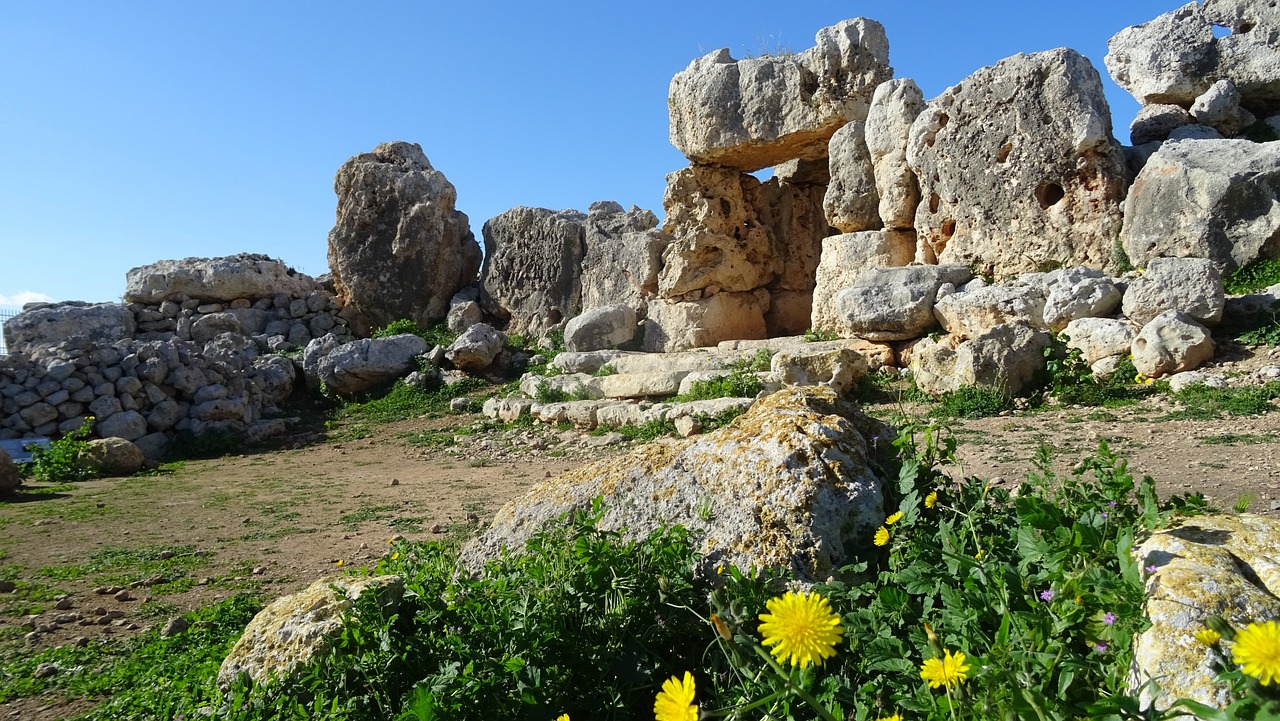
Egyptian Economy
Exploring the economic systems and practices of ancient civilizations provides insights into their trade, agriculture, currency, and societal structures. Uncovering these secrets sheds light on the foundations of modern economic principles.
The economy of ancient Egypt was a fascinating blend of agriculture, trade, and a unique barter system that sustained this ancient civilization along the banks of the Nile River. The Egyptians heavily relied on the fertile lands of the Nile for their agricultural practices, cultivating crops like wheat, barley, and flax. This agricultural surplus not only fed the population but also played a crucial role in trade with neighboring regions.
Moreover, the Nile River served as a vital trade route, enabling the Egyptians to exchange goods such as papyrus, linen, and precious metals with other civilizations. The barter system, where goods were exchanged without the use of currency, was a fundamental aspect of the Egyptian economy, showcasing their sophisticated system of trade and commerce.
By delving into the economic practices of ancient Egypt, we can unravel the mysteries of how this advanced civilization managed its resources, sustained its population, and thrived in a challenging environment.
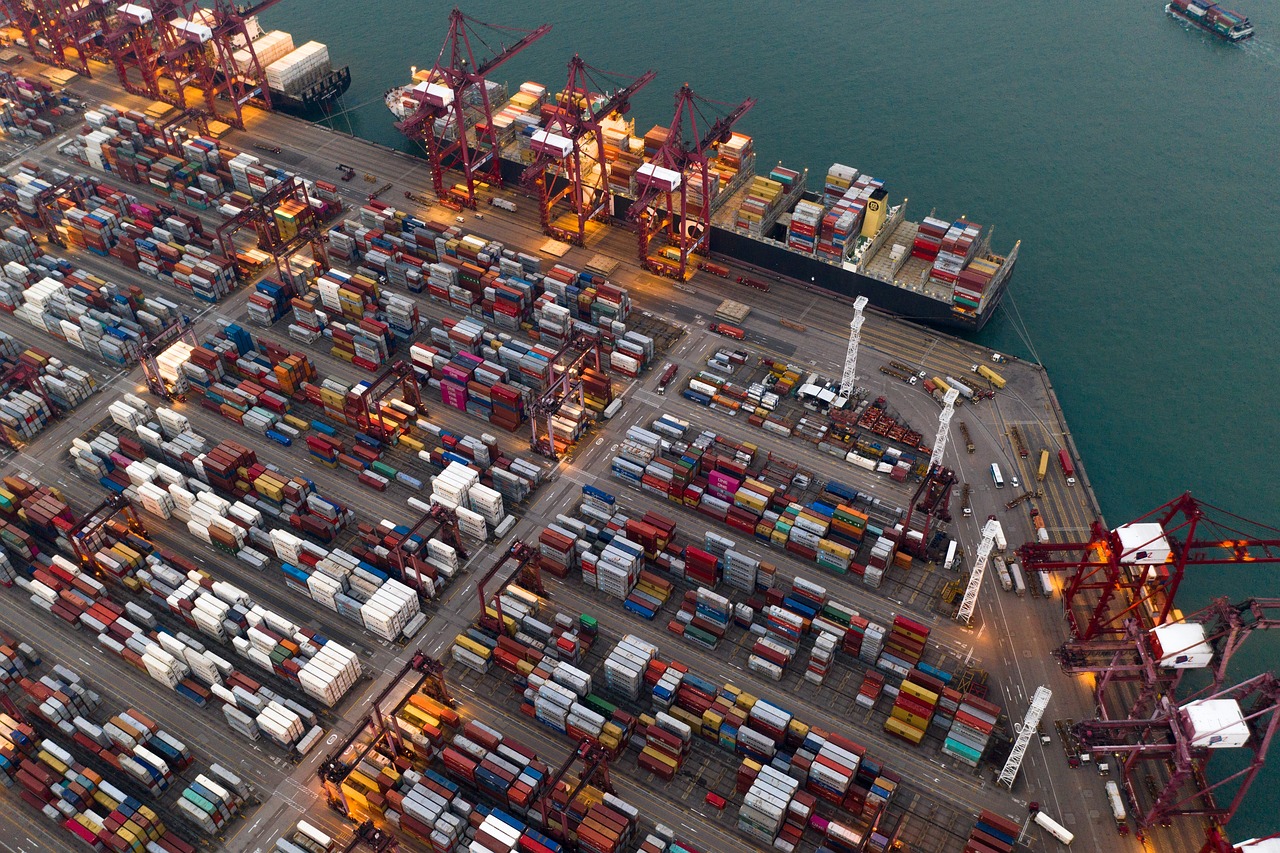
Greek City-States' Trade Networks
Exploring the economic systems and practices of ancient civilizations provides insights into their trade, agriculture, currency, and societal structures. Uncovering these secrets sheds light on the foundations of modern economic principles.
The economy of ancient Egypt was heavily reliant on agriculture, trade along the Nile River, and a barter system. Understanding their economic practices helps unravel the mysteries of their advanced civilization.
The Greek city-states engaged in extensive trade networks across the Mediterranean, exchanging goods like olive oil, pottery, and wine. Discovering the economic dynamics of these ancient trade routes reveals their interconnected economies.
The Roman Empire's economy was characterized by the widespread use of currency, sophisticated trade routes, and a system of taxation. Delving into their economic structure provides valuable insights into their vast empire.
The ancient Maya civilization developed intricate trade routes that connected various regions, facilitating the exchange of goods like jade, obsidian, and cacao. Exploring their trade networks unveils the economic prowess of the Maya.
The Silk Road, originating in ancient China, was a vital trade route that connected the East and West, facilitating the exchange of silk, spices, and other goods. Studying the economic impact of the Silk Road illuminates ancient Chinese commerce.
The Indus Valley Civilization had a complex urban economy based on agriculture, trade, and craft production. Unraveling the economic structures of this ancient civilization provides insights into their urban planning and societal organization.
The Inca Empire employed a state-controlled economic system where resources were redistributed centrally. Understanding the economic mechanisms of the Inca Empire sheds light on their impressive infrastructure and governance.
Ancient Babylonians were known for their advanced banking practices and accounting systems, including loans, interest rates, and record-keeping. Exploring their financial innovations offers a glimpse into the origins of modern banking.
The Greek city-states were bustling hubs of trade and commerce, fostering vibrant economic exchanges across the Mediterranean region. Their trade networks were like intricate webs, connecting various city-states and facilitating the flow of goods and ideas.
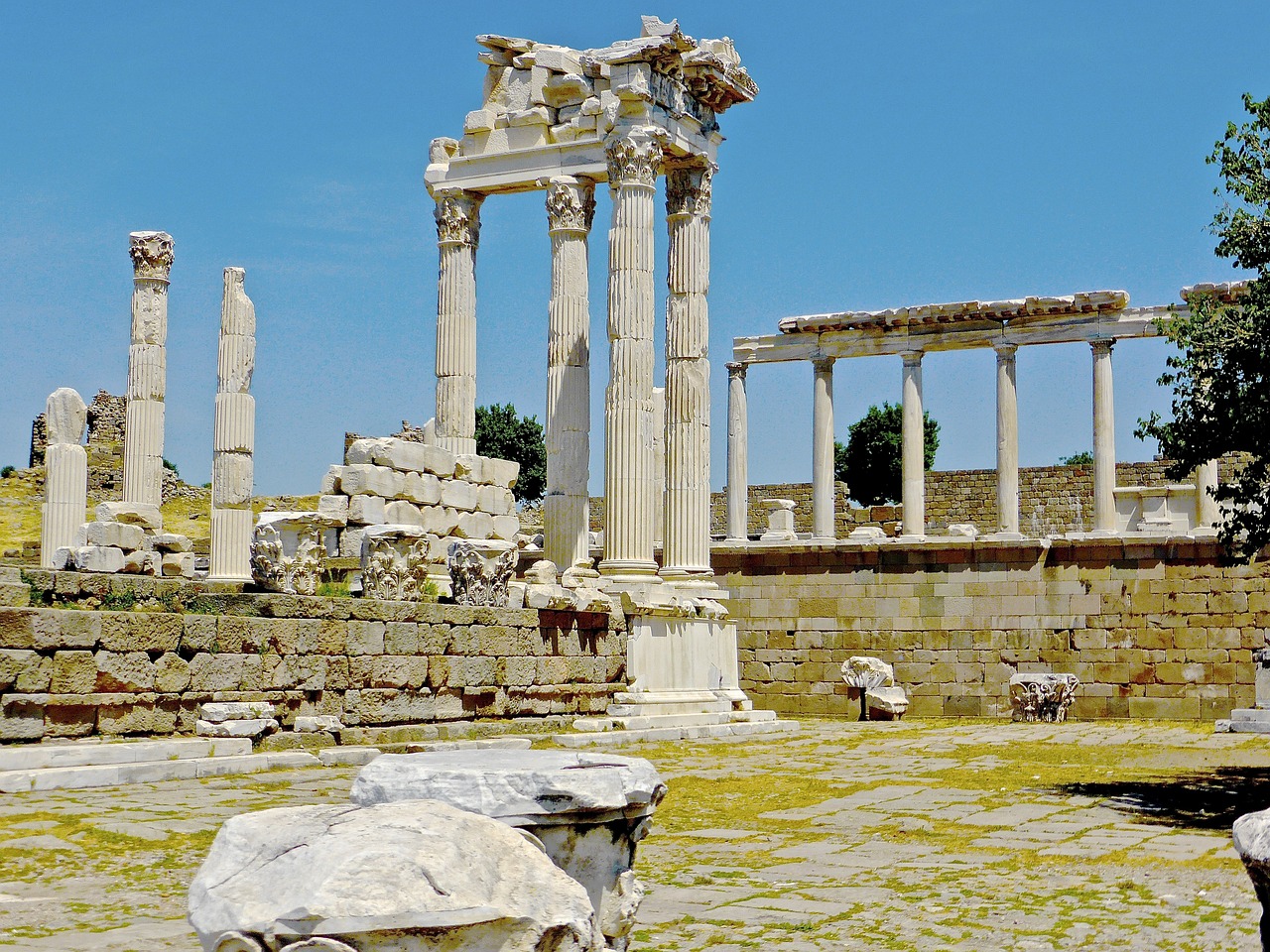
Roman Currency and Commerce
Exploring the economic systems and practices of ancient civilizations provides insights into their trade, agriculture, currency, and societal structures. Uncovering these secrets sheds light on the foundations of modern economic principles.
The economy of ancient Egypt was heavily reliant on agriculture, trade along the Nile River, and a barter system. Understanding their economic practices helps unravel the mysteries of their advanced civilization.
The Greek city-states engaged in extensive trade networks across the Mediterranean, exchanging goods like olive oil, pottery, and wine. Discovering the economic dynamics of these ancient trade routes reveals their interconnected economies.
The Roman Empire's economy was characterized by the widespread use of currency, sophisticated trade routes, and a system of taxation. Delving into their economic structure provides valuable insights into their vast empire.
The ancient Maya civilization developed intricate trade routes that connected various regions, facilitating the exchange of goods like jade, obsidian, and cacao. Exploring their trade networks unveils the economic prowess of the Maya.
The Silk Road, originating in ancient China, was a vital trade route that connected the East and West, facilitating the exchange of silk, spices, and other goods. Studying the economic impact of the Silk Road illuminates ancient Chinese commerce.
The Indus Valley Civilization had a complex urban economy based on agriculture, trade, and craft production. Unraveling the economic structures of this ancient civilization provides insights into their urban planning and societal organization.
The Inca Empire employed a state-controlled economic system where resources were redistributed centrally. Understanding the economic mechanisms of the Inca Empire sheds light on their impressive infrastructure and governance.
Ancient Babylonians were known for their advanced banking practices and accounting systems, including loans, interest rates, and record-keeping. Exploring their financial innovations offers a glimpse into the origins of modern banking.
The Roman Empire's economy thrived on the foundation of a sophisticated currency system and extensive commercial activities. Roman currency, predominantly consisting of gold, silver, and copper coins, played a crucial role in facilitating trade and commerce within the empire. The Romans established a vast network of trade routes that connected distant regions, enabling the flow of goods and services across their territories.
In addition to currency, the Romans excelled in commerce, engaging in both local and international trade. Their economy benefited from the abundance of resources available in the empire, allowing for the production and exchange of various goods such as grain, wine, and pottery. The Roman merchants played a significant role in expanding the empire's economic influence through their trading activities.
The Roman government played a pivotal role in regulating commerce and ensuring the smooth functioning of markets. They implemented laws to govern trade practices, protect merchants, and maintain economic stability. The development of marketplaces and forums provided a platform for commercial transactions and served as hubs for economic activities.
Moreover, the Roman economy was supported by a sophisticated system of taxation that contributed to the empire's financial resources. Taxes levied on goods, property, and individuals provided the necessary revenue for funding public infrastructure, military campaigns, and administrative expenses. The efficient collection and management of taxes were essential for sustaining the economic prosperity of the Roman Empire.
Overall, the Roman economy thrived on a combination of currency innovation, robust commercial networks, governmental regulation, and taxation policies. The legacy of Roman economic practices continues to influence modern economic systems and serves as a testament to the empire's economic prowess and organizational skills.
Q: Were ancient civilizations like Rome reliant solely on barter systems for trade?
A: While barter systems were prevalent in some ancient civilizations, advanced economies like Rome had developed sophisticated currency systems to facilitate trade.
Q: How did ancient civilizations manage their taxation systems?
A: Ancient civilizations implemented various taxation methods, including levies on goods, property, and individuals, to generate revenue for governance and public services.
Q: What role did trade routes play in the economic prosperity of ancient civilizations?
A: Trade routes were crucial in connecting regions, facilitating the exchange of goods, fostering economic growth, and promoting cultural exchange among ancient civilizations.

Mayan Trade Routes
The Mayan civilization, known for its intricate trade networks, established extensive trade routes that connected various regions within Mesoamerica. These trade routes played a crucial role in facilitating the exchange of valuable goods such as jade, obsidian, cacao, and other commodities essential for their economy.
Mayan traders navigated through dense jungles and rugged terrains to transport goods between different Mayan city-states and neighboring regions. The exchange of goods not only contributed to the economic prosperity of the Mayan civilization but also fostered cultural exchanges and diplomatic relations among various communities.
The Mayans utilized a barter system for trade, exchanging goods based on their intrinsic value and significance within their society. Items like precious stones, textiles, agricultural products, and artisanal crafts were highly sought after and formed the backbone of the Mayan economy.
Moreover, the Mayans were adept at utilizing natural resources available in their environment, such as jade from the Guatemalan highlands and cacao from the tropical lowlands. These resources were highly prized commodities that were traded along the intricate Mayan trade routes, showcasing the economic ingenuity of this ancient civilization.
Through the exploration of Mayan trade routes, historians and archaeologists have gained valuable insights into the economic structures, social interactions, and cultural exchanges that defined the vibrant Mayan civilization. The legacy of their trade networks continues to intrigue scholars and enthusiasts alike, offering a glimpse into the economic prowess and sophistication of the ancient Mayan society.
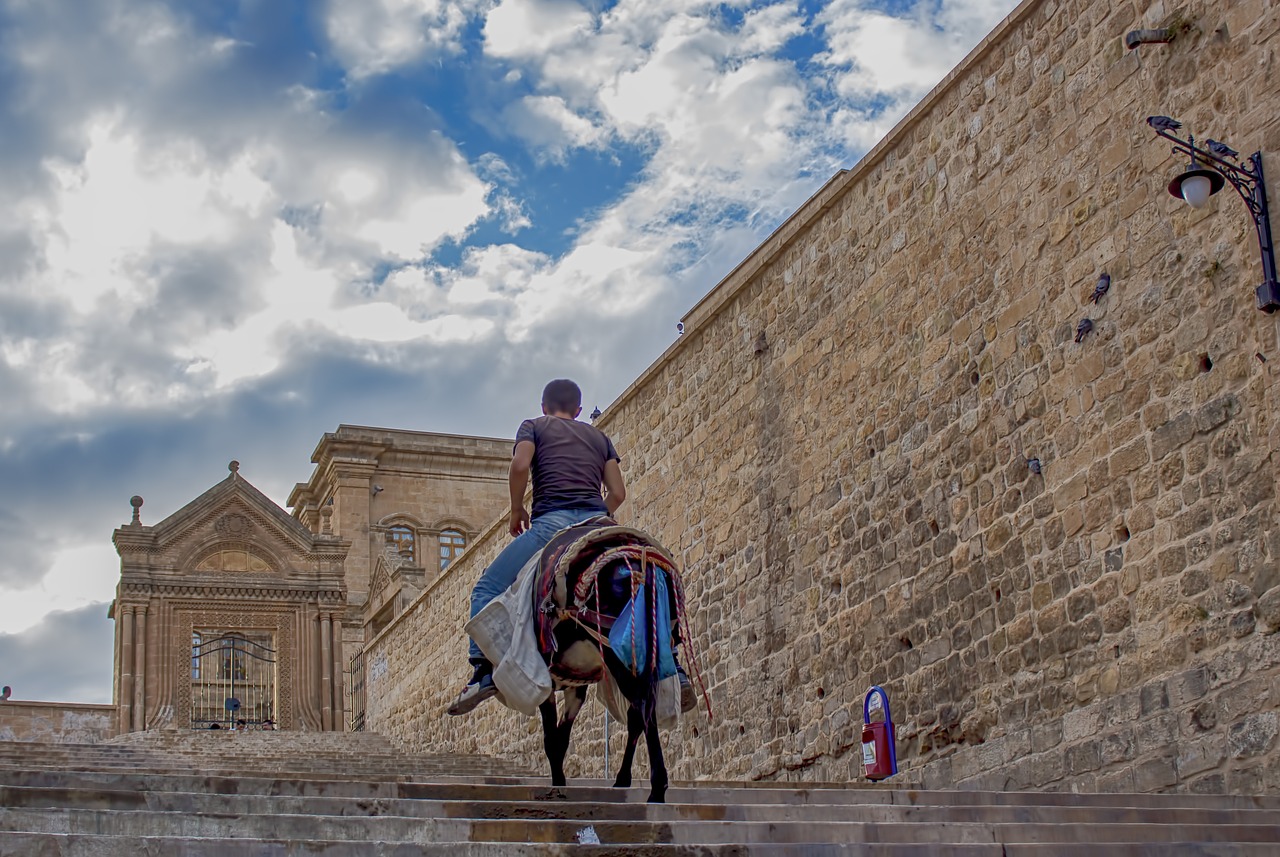
Chinese Silk Road
The Chinese Silk Road, originating in ancient China, was a monumental trade route that played a crucial role in connecting the East and the West. This vast network facilitated the exchange of a wide array of goods, including luxurious silk, aromatic spices, precious gems, and exotic commodities. Traversing through diverse landscapes and cultures, the Silk Road not only stimulated commerce but also fostered cultural exchanges and diplomatic relations between distant civilizations.
Caravans laden with silk from Chinese workshops, spices from the Indian subcontinent, and gold and silver from the Roman Empire journeyed along this intricate network of trade routes. Merchants, travelers, and diplomats embarked on arduous expeditions, braving deserts, mountains, and perilous terrains to reach their destinations. The Silk Road was not merely a conduit for goods but a pathway for ideas, technologies, and beliefs to flow across continents.
The economic impact of the Chinese Silk Road was profound, shaping the economies of regions along its path and beyond. It facilitated the growth of thriving marketplaces, bustling cities, and prosperous trading hubs. The Silk Road spurred innovations in transportation, communication, and financial systems, laying the groundwork for globalization long before the term was coined.

Indus Valley Civilization's Urban Economy
The Indus Valley Civilization, one of the world's earliest urban societies, thrived in the fertile plains of present-day Pakistan and northwest India. This ancient civilization boasted a sophisticated urban economy that revolved around agriculture, trade, and craft production. The cities of Mohenjo-Daro and Harappa served as economic hubs, showcasing meticulous urban planning and advanced infrastructure.
Agriculture played a crucial role in the economy of the Indus Valley Civilization. The fertile soil of the Indus River basin supported the cultivation of a variety of crops, including wheat, barley, and cotton. Irrigation systems, such as canals and wells, were developed to ensure a steady water supply for agricultural activities, highlighting the civilization's ingenuity in harnessing natural resources.
Trade was another cornerstone of the Indus Valley economy, with evidence of long-distance trade networks extending to Mesopotamia and other regions. The civilization engaged in the exchange of goods such as pottery, beads, and precious stones, indicating a thriving trade network that facilitated cultural exchange and economic prosperity.
Craft production was highly developed in the Indus Valley Civilization, with skilled artisans creating intricate pottery, metalwork, and jewelry. Specialized craft workshops dotted the urban landscape, showcasing the civilization's expertise in producing high-quality goods for both local consumption and trade with neighboring regions.
The urban centers of the Indus Valley Civilization boasted well-planned layouts, with streets laid out in a grid pattern and sophisticated drainage systems in place. This urban planning not only facilitated efficient movement within the cities but also reflected the civilization's organizational prowess and emphasis on order and structure.
In conclusion, the urban economy of the Indus Valley Civilization was a testament to the civilization's advanced economic practices and urban sophistication. Through agriculture, trade, and craft production, the civilization thrived and left behind a legacy of innovation and prosperity that continues to intrigue historians and archaeologists to this day.

Inca Empire's State-Controlled Economy
The Inca Empire, renowned for its vast territorial expanse and impressive infrastructure, operated on a unique state-controlled economic system. At the heart of the empire's economy was the concept of redistribution, where resources were centrally collected and then allocated to different regions and communities based on their needs and contributions.
This centralized economic structure enabled the Inca rulers to maintain control over the empire's resources and ensure equitable distribution among the population. Through an extensive network of administrative centers and storage facilities, the empire efficiently managed agricultural produce, textiles, and other goods.
One of the key elements of the Inca economy was the mit'a system, a form of mandatory labor tax where citizens were required to contribute a certain amount of labor to state projects. This labor force was crucial for the construction of roads, irrigation systems, and agricultural terraces that sustained the empire's economy.
Moreover, the state-controlled economy of the Inca Empire extended to trade and commerce, with the government regulating the exchange of goods within and beyond the empire's borders. This centralized approach to economic management allowed the empire to thrive and support its vast population.
By delving into the intricacies of the Inca Empire's state-controlled economy, we gain a deeper understanding of how this ancient civilization achieved remarkable feats in infrastructure development, resource management, and societal organization.

Babylonian Banking and Accounting
Ancient Babylonians were pioneers in the field of banking and accounting, laying the groundwork for modern financial systems. Their innovative practices included the establishment of lending institutions, the introduction of interest rates, and the development of sophisticated accounting methods. Babylonian banking played a crucial role in facilitating trade and commerce, providing a structured framework for economic transactions in the ancient world.
One of the key aspects of Babylonian banking was the issuance of loans to individuals and businesses. These loans were often accompanied by interest rates, marking the early beginnings of financial transactions based on borrowed capital. The Babylonians meticulously recorded these transactions, keeping detailed accounts of debts, credits, and interest payments.
Moreover, Babylonian bankers were adept at managing currency exchanges and facilitating international trade. Their expertise in handling different forms of currency and evaluating exchange rates contributed to the growth of commerce across ancient civilizations. The development of banking institutions in Babylon set a precedent for future financial systems and paved the way for the establishment of more complex economic structures.
In addition to their banking practices, Babylonians excelled in accounting methods that involved meticulous record-keeping and documentation. They utilized clay tablets to record financial transactions, creating one of the earliest forms of written accounting. These records not only served as evidence of economic activities but also enabled the calculation of profits, losses, and overall financial health.
The Babylonians' emphasis on accurate accounting laid the foundation for modern accounting principles, influencing the evolution of financial management practices. Their meticulous attention to detail and systematic approach to tracking financial data set a standard for future generations of accountants and financial professionals.
Frequently Asked Questions
- What were the key economic activities of ancient civilizations?
Ancient civilizations engaged in various economic activities such as agriculture, trade, craft production, and commerce. These activities formed the backbone of their economies and contributed to their societal development.
- How did ancient civilizations conduct trade?
Ancient civilizations conducted trade through established trade routes, barter systems, and marketplaces. They exchanged goods such as food, textiles, precious metals, and luxury items to meet their economic needs and foster cultural exchange.
- What role did currency play in ancient economies?
Currency played a significant role in ancient economies by facilitating trade, standardizing transactions, and promoting economic growth. Different civilizations developed their forms of currency to streamline economic activities.
- How did ancient civilizations manage their resources?
Ancient civilizations managed their resources through centralized systems, barter exchanges, and state-controlled mechanisms. Resource allocation, distribution, and utilization were essential components of their economic structures.
- What insights can we gain from studying ancient economic systems?
Studying ancient economic systems provides insights into the development of economic principles, trade networks, cultural interactions, and societal organization. It offers a glimpse into the foundations of modern economic practices and theories.

